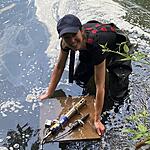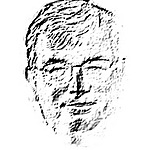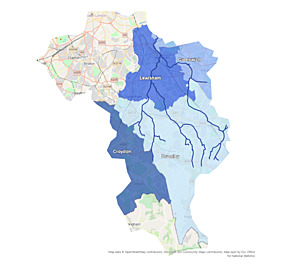You need to be registered to request to join groups.
Sign Up
Ravensbourne Catchment Improvement Group's Water Quality Working Group
Leaderboard

5130 Points

3700 Points

2170 Points

1690 Points

800 Points
About
The Water Quality Working Group (WQWG) is a subset of the Ravensbourne Catchment Improvement Group (RCIG), which is made up of stakeholders from the EA, Thames Water, local authorities, community groups and environmental NGOs like Thames21 and ZSL who are all working together to improve the waterways in the River Ravensbourne Catchment. The Ravensbourne Catchment's rivers flow northwards from the furthest upstream points in Keston, Locksbottom and Croydon to the confluence of the River Ravensbourne with the River Thames at Deptford.
Key members of the RCIG and its WQWG are the fantastic community groups who work to improve river and community health through activities like litter picks, habitat creation and management, river restoration, and ecological and water quality monitoring in specific areas on the Rivers Ravensbourne, Quaggy and Pool and their smaller tributaries including Chaffinch Brook, The Beck and Kyd Brook.
For more information about the catchment and the catchment partnership, please follow these links:
https://storymaps.arcgis.com/collections/f2f8d115e113400aa0f8165e762a6321
https://environment.data.gov.uk/catchment-planning/OperationalCatchment/3369
Water testing protocol
Sewage pollution, road runoff and agricultural pollution are the main factors negatively impacting the water quality in the catchment. A'WaterBlitz' was carried out on 30th May 2023 to provide a snapshot of the impact of sewage pollution on the catchment's water quality around the catchment. More information and the results can be found here:
https://storymaps.arcgis.com/stories/9500d931d7f34461969edd840092776f
As a result of this WaterBlitz, we could see where the sewage pollution hotspots and sites with good water quality were located. This has allowed us to set up monitoring sites at some of these locations to gather more regular water quality data in order to investigate the magnitude and source of the pollution and to gather baseline data.
Dissolved phosphate and ammonia are indicators of sewage pollution, so the dedicated citizen scientists of the RCIG's WQWG are monitoring these sites using:
Hanna checkers for phosphates (low-range) from 0.0 to 2.5 mg/L
Hanna checkers for ammonia (low-range) from 0 to 3 mg/L and ammonia (medium range) from 0.00 to 9.99 mg/L
Some of these monitoring sites are also being monitored by citizen scientists using the urban riverfly monitoring initiative (RMI) methodology and devices that measure physical parameters like temperature, pH and turbidity.

